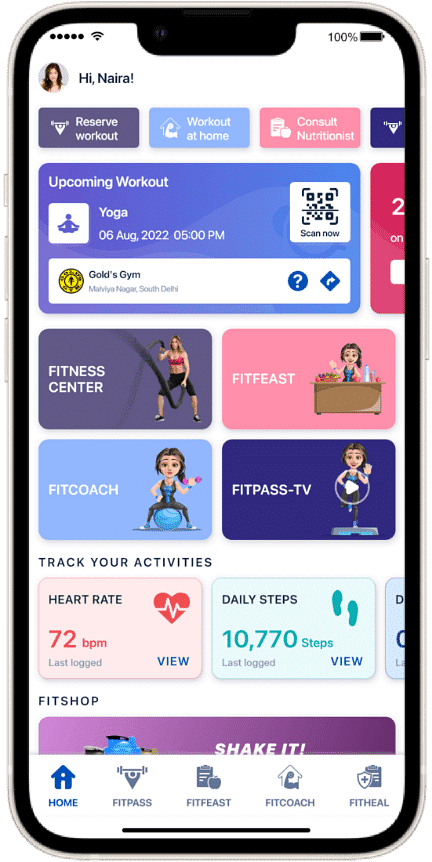Everything You Need To Know About Peanut Butter
Table of Contents
- What is Peanut Butter?
- How Peanut Butter is Made
- Nutrition Benefits of Peanut Butter
- Health Benefits of Peanut Butter
- Natural Vs Organic Peanut Butter
- Creamy or Crunchy: Which One is Better?
- Peanut Butter for Weight Gain and Weight Loss
- Peanut Butter vs Almond Butter
- Peanut Butter Allergy: What You Need to Know
- Low-Sugar Peanut Butter Options
- Peanut Butter Storage Tips
- Homemade Peanut Butter Recipe
- Final Thoughts
Peanut butter has become a popular kitchen staple around the world. Whether you love it on toast, in smoothies, or baked into desserts, this nutty spread is a favourite for many. But have you ever wondered what makes it so good for you, how it is made, or how to choose the right one?
This blog will answer all the questions about peanut butter nutrition, benefits, types, and more.
What is Peanut Butter?
Peanut butter is a spread made from ground, dry-roasted peanuts. It has a thick, creamy, or crunchy texture and is packed with flavour. While some brands add sugar, oil, and salt, natural peanut butter usually contains just peanuts and perhaps a pinch of salt. It’s known for being both delicious and nutritious.
How Peanut Butter is Made
The process begins with roasting peanuts to bring out the nutty flavour. After roasting, the skins are removed, and the peanuts are ground until they form a thick paste. For creamy peanut butter, the mixture is ground longer to make it smoother. For crunchy peanut butter, chopped peanuts are added after grinding to keep the texture chunky. Some versions are processed further with added oils or sugar, but organic peanut butter avoids these extras.
Nutrition Benefits of Peanut Butter

Peanut butter is rich in protein, healthy fats, fibre, and essential vitamins and minerals. Just two tablespoons of peanut butter typically offer:
- Around 8 grams of protein.
- Healthy monounsaturated and polyunsaturated fats.
- Vitamin E, magnesium, potassium and B vitamins.
- Around 1900 to 200 calories.
Because of its high peanut butter protein content, it’s great for muscle building and repair, especially for people with active lifestyles.
Health Benefits of Peanut Butter
Let’s take a look at some of the key benefits of peanut butter:
- Heart Health: The good fats in peanut butter support heart health by reducing bad cholesterol.
- Weight Management: Despite its calorie count, peanut butter can support weight loss by keeping you full longer.
- Muscle Growth: Its protein makes it ideal for athletes and fitness enthusiasts.
- Blood Sugar Control: It has a low glycaemic index, which helps maintain steady blood sugar levels.
- Brain Function: The presence of niacin and vitamin E supports brain health.
Natural Vs Organic Peanut Butter

Natural peanut butter typically has just two ingredients: peanuts and salt. It doesn’t contain hydrogenated oils or added sugars. Organic peanut butter goes a step further by using peanuts grown without synthetic pesticides or fertilisers. Both are better choices than highly processed versions, especially if you’re watching your health.
Creamy or Crunchy: Which One is Better?
Choosing between creamy peanut butter and crunchy peanut butter comes down to personal preference. Creamy spreads smoothly and works well in sauces or dressings. Crunchy adds texture and is ideal for sandwiches or baking. Nutritionally, both offer similar values, so the decision is entirely based on taste and texture.
Peanut Butter for Weight Gain and Weight Loss
Peanut butter can help with both weight gain and weight loss, depending on how you use it. If you're aiming to gain weight, adding peanut butter to smoothies, toast, or snacks can increase your calorie intake healthily. If you're trying to lose weight, a small portion can keep you full for longer, helping you control cravings. The key is moderation.
Peanut Butter vs Almond Butter
Both peanut butter and almond butter are healthy, but there are slight differences. Almond butter has slightly more vitamins, like vitamin E and magnesium, while peanut butter tends to be more affordable and has higher protein content. If you're allergic to peanuts, almond butter is a good alternative. But in terms of taste and texture, it's all about your preference.
Peanut Butter Allergy: What You Need to Know

Peanut allergies are common, especially in children. Reactions can range from mild itching to severe anaphylaxis. If you or someone in your family has a peanut allergy, avoid all products containing peanuts and always check labels. There are many peanut butter alternatives available, such as almond or sunflower seed butter.
Low-Sugar Peanut Butter Options
Many brands now offer low-sugar peanut butter, which is perfect if you're watching your sugar intake. These options typically contain no added sugar and are sweetened naturally or not at all. Always check the ingredient list to ensure there are no hidden additives.
Peanut Butter Storage Tips
To keep peanut butter fresh, store it in a cool, dark place. Natural peanut butter should be stirred well before use, as oil separation is normal. Once opened, it’s best to refrigerate it, especially organic versions, to maintain freshness and prevent oil from going rancid.
Homemade Peanut Butter Recipe

Making peanut butter at home is easy and allows you to control the ingredients.
Here’s a simple recipe:
Ingredients:
- 2 cups of roasted peanuts
- A pinch of salt (optional)
Method:
- Place peanuts in a food processor.
- Blend for 3-5 minutes until smooth, scraping down the sides.
- Add salt to taste.
- Store in a sealed jar in the fridge.
This homemade peanut butter is healthy, fresh, and free from preservatives.
Peanut Butter Recipes to Try
There are endless peanut butter recipes to explore. From breakfast to dinner, and even desserts, here are some ideas:
- Peanut butter banana smoothie.
- Peanut butter overnight oats.
- Satay peanut butter chicken.
- Peanut butter and apple slices.
- Energy balls with oats and peanut butter.
Peanut Butter Dessert Ideas
If you have a sweet tooth, try these peanut butter dessert ideas:
- Peanut butter brownies.
- Chocolate peanut butter cups.
- Peanut butter cookies.
- Peanut butter cheesecake.
These treats are rich, satisfying, and a fun way to enjoy the spread.
Cooking Hacks with Peanut Butter

Here are some clever peanut butter cooking hacks:
- Use it to thicken sauces or soups.
- Stir into porridge for added creaminess.
- Add to salad dressings for a nutty twist.
- Mix into yoghurt for a protein-packed snack.
Peanut butter can do more than just sit on toast!
Final Thoughts
Peanut butter is a versatile, nutritious, and tasty food that fits into many diets. From its protein content to its heart-healthy fats, there are countless reasons to include it in your meals. Whether you go for crunchy or creamy, organic or natural, make sure to enjoy it in moderation and always read labels to get the best version for your needs.
Peanut butter is more than just a spread – it's a nutritional powerhouse you can use in countless ways. Enjoy it wisely!
Is peanut butter healthy every day?
Yes, when eaten in moderation. Choose natural or organic versions without added sugars or hydrogenated oils.
Can peanut butter help with muscle building?
Absolutely. Its high protein and healthy fat content make it great for recovery and muscle growth.
What’s the best way to store peanut butter?
Keep it in a cool, dry place. Refrigerate after opening for better shelf life, especially for natural and organic types.
Is peanut butter good for people with diabetes?
Yes, in moderation. Its low glycaemic index helps control blood sugar levels. Just avoid versions with added sugar.


